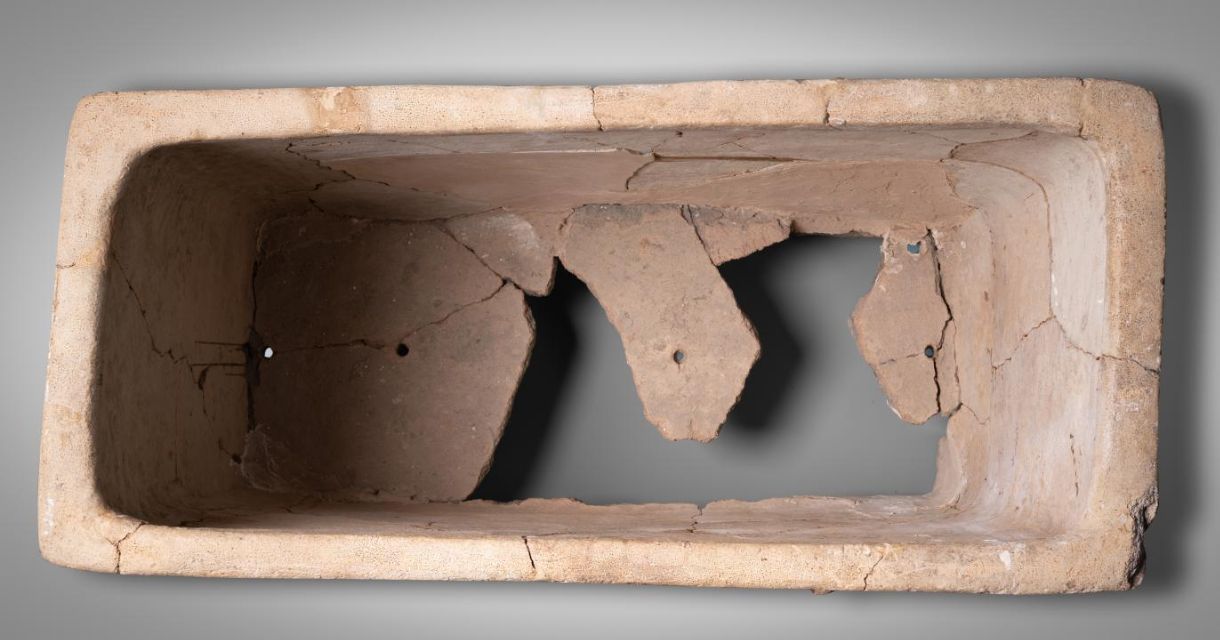Down the drain
If you remove the lid from the body of the larnax, you would first of all see that the bottom is incomplete, as it has been damaged. On closer inspection, you would perceive holes in the bottom; a common occurrence in Minoan coffins. The purpose of the holes is strongly related to the function of the chest. As you can imagine, a corpse would eventually decompose after being placed in the larnax. Decomposition is accompanied by various fumes and fluids leaving the body, resulting in an unbearable smell! The function of the holes was not to spread the smell of a corpse in the nearby region, but rather to dispose of the bodily fluids like a drain.
In the bottom of this larnax, there are approximately four holes in the middle. You would, however, only see one hole in the right back corner, since all other corners have been destroyed. For practical purposes, it seems logical that holes were made in each corner.
The holes in the larnax tell us something about the initial and authentic function of the chest. To rewind a bit: the clay larnakes were probably modelled after wooden predecessors possibly used for domestic purposes, such as linen chests. The holes in this larnax were actually made in the clay before the baking process, when the clay was still wet. This demonstrates that holes were necessary for the definitive purpose of the chest. Therefore, this chest was exclusively produced as a larnax and was not used for domestic purposes. There are, on the other hand, terracotta chests with a hole in the bottom that were used as baths. This particular type of chest can be distinguished from the larnax by the fact that the terracotta bath only has one hole in order to drain the water, whereas the larnax usually has multiple.
It is now clear that the production of a larnax was a complicated procedure that required specialist knowledge and skills. Let’s move on to the next step to discover the ins and outs of this process!
